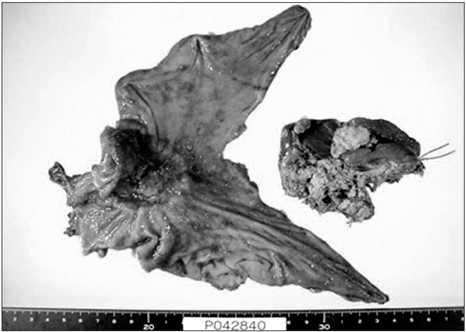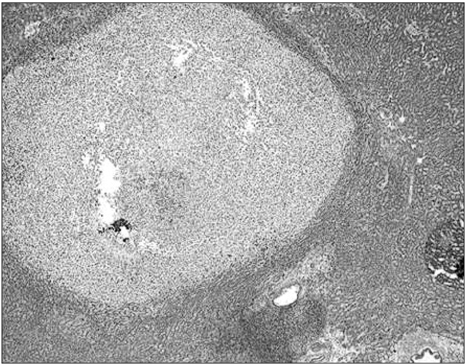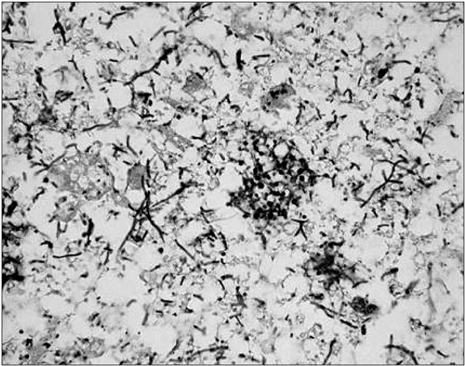J Gastric Cancer.
2013 Jun;13(2):126-128.
A Case of Sudden Onset Septicemia in Recurred Gastric Cancer Following S1 Plus Docetaxel Treatment
- Affiliations
-
- 1Department of Digestive Surgery, Breast and Thyroid Surgery, Kagoshima University School of Medicine, Kagoshima, Japan. ishiga@m.kufm.kagoshima-u.ac.jp
Abstract
- Pyogenic liver abscess in patients with malignant disease is a fatal state and is easily diagnosed. We presented a rare case of sudden fatal septicemia following anticancer treatment for recurred gastric cancer due to multiple liver abscesses which could not be diagnosed. A 72-year-old male with recurred gastric cancer received anticancer agents. He had a history of distal gastrectomy with right hepatic lobectomy for hepatic metastasis. He received anticancer treatment in the outpatient's service center periodically, and his performance status was preserved with nothing in particular. After administrating docetaxel, he suddenly developed septicemia and multiple organ failure and died 5 days after strong medical supports. Pathological autopsy revealed that multiple minute abscesses of the liver which could not be detected macroscopically were the causes of fatal septicemia. The etiology, therapies and prognosis of rare entity are being discussed.
Keyword
MeSH Terms
Figure
Reference
-
1. Bahloul M, Chaari A, Bouaziz-Khlaf N, Kallel H, Herguefi L, Chelly H, et al. Multiple pyogenic liver abscess. World J Gastroenterol. 2006. 12:2962–2963.
Article2. Greenstein AJ, Lowenthal D, Hammer GS, Schaffner F, Aufses AH Jr. Continuing changing patterns of disease in pyogenic liver abscess: a study of 38 patients. Am J Gastroenterol. 1984. 79:217–226.3. Schiff E, Pick N, Oliven A, Odeh M. Multiple liver abscesses after dental treatment. J Clin Gastroenterol. 2003. 36:369–371.
Article4. Rahimian J, Wilson T, Oram V, Holzman RS. Pyogenic liver abscess: recent trends in etiology and mortality. Clin Infect Dis. 2004. 39:1654–1659.
Article5. Yeh TS, Jan YY, Jeng LB, Hwang TL, Chao TC, Chien RN, et al. Pyogenic liver abscesses in patients with malignant disease: a report of 52 cases treated at a single institution. Arch Surg. 1998. 133:242–245.
- Full Text Links
- Actions
-
Cited
- CITED
-
- Close
- Share
- Similar articles
-
- A case of peritoneal metastasis from gastric cancer successfully treated with docetaxel and cisplatin chemotherapy
- Combination chemotherapy with docetaxel and cisplatin as first-line treatment in advanced gastric cancer: is it a new effective chemotherapy?
- Curative Resection of Inoperable, Locally Advanced Gastric Cancer after Neoadjuvant Chemotherapy with Taxotere and Cisplatin
- A New Option for Advanced Gastric Cancer: Docetaxel and Novel Oral Fluoropyrimidine Combination Chemotherapy
- A Case of Localized Erythematous Dermatitis on the Site of a Docetaxel Injection




